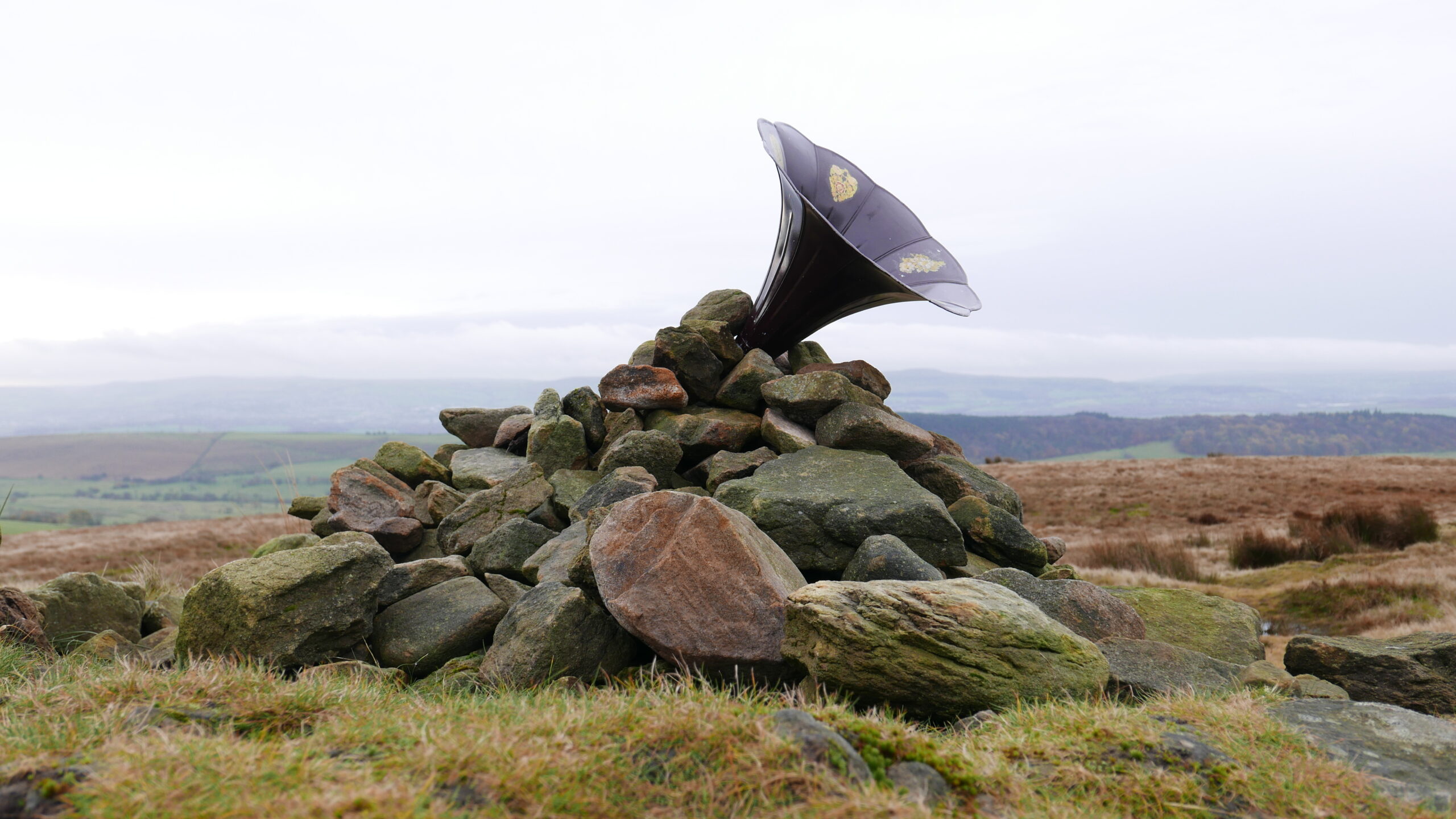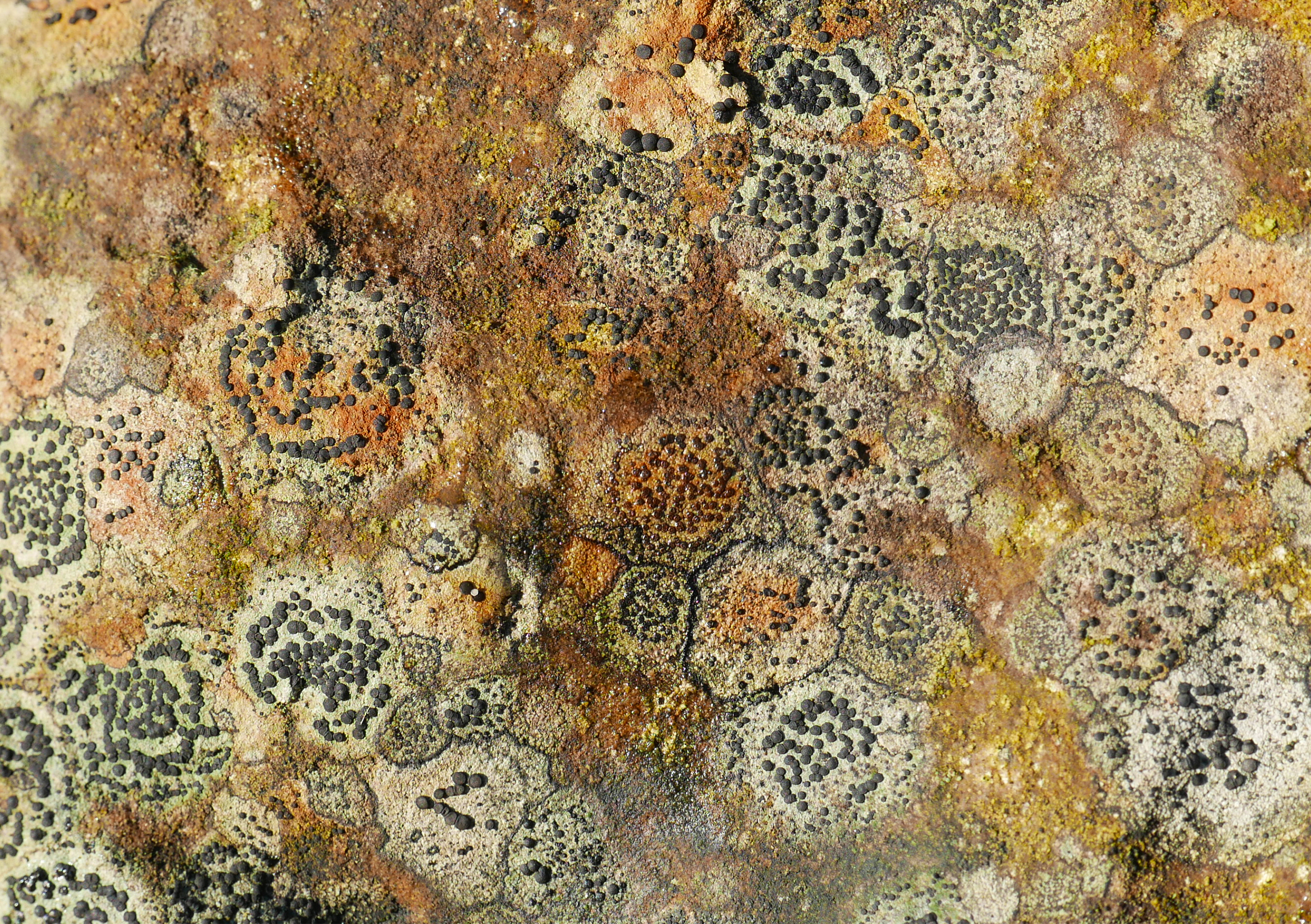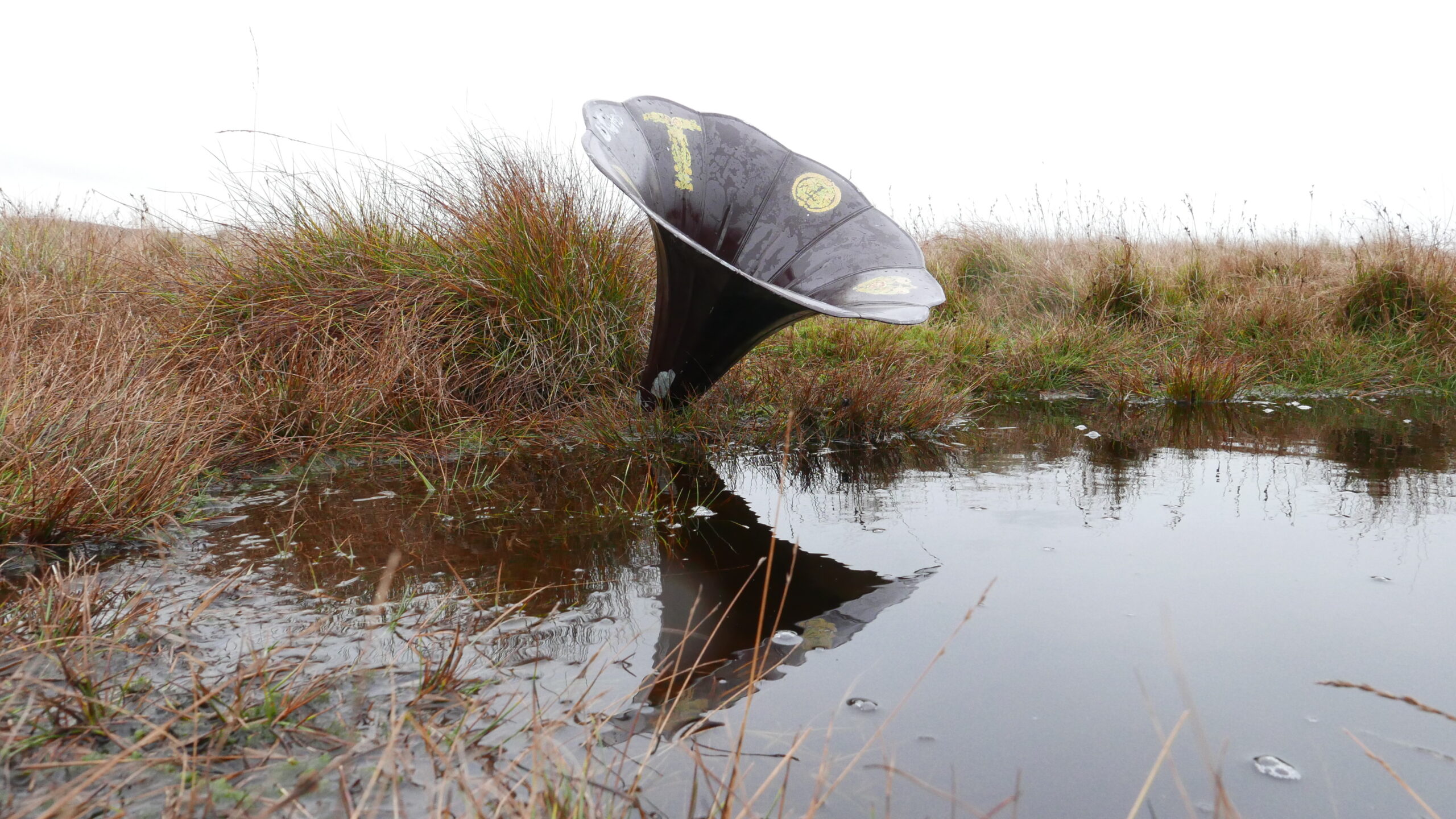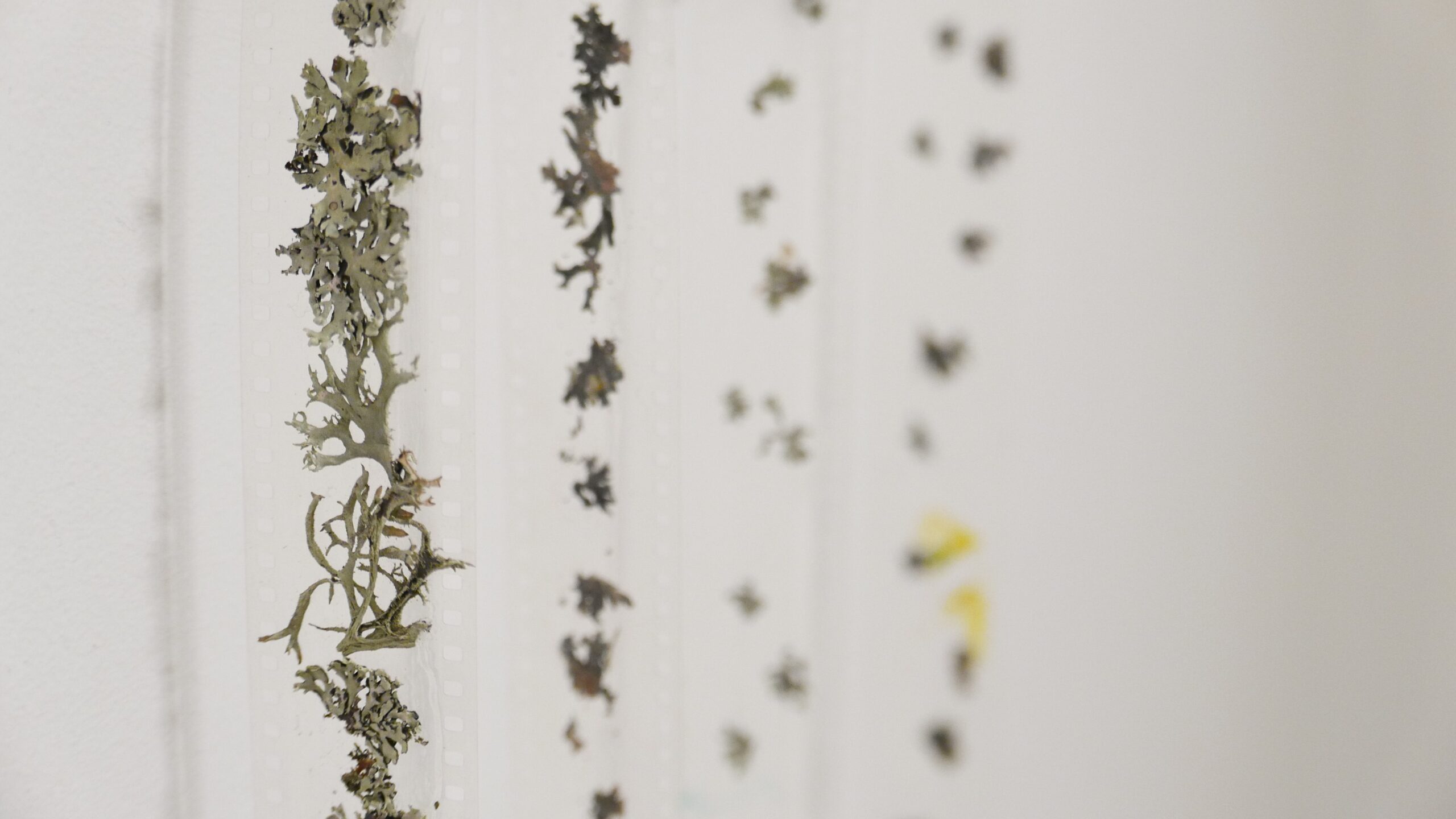emergent landscapes
2016 onwards
An art-geography installation at Tate Modern Switch House in December 2016.
Collaborate and create new visual and sonic landscapes that develop over time, through soundscaping, cairn building and organic painting.
Exploring the mapping of movement, sound and growth in the newly created Tate Exchange space, the results will extend beyond three days and develop into a shared experiment in ongoing creative landscaping in collaboration with the Architectural Association at Hooke Park and Common Ground.
More information on the Tate website Emergent Landscapes project website
+++
Emergent Landscapes is a participatory installation at Switch House, Tate Modern, running between 9-11 December 2016 as part of Tate Exchange, which is both a programme and space for the public of all ages and interests to collaborate, test ideas and discover new perspectives on life, through art. Emergent Landscapes involves two shared, public elements – cairn construction and the layering of a soundscape which echoes visitor contributions, reflections and perceptions in and around the Tate Exchange space.
In the north-west corner of the space, we’ll work together build a cairn to mark the newly built Switch House building, layered with strata of slowly activating lichen and moss paints applied by you: your marks and actions overlaid in the construction. The cairn is constructed of clay tiles (a nod to the London Clay bedrock underneath Tate, and the tones of the Switch House brickwork), wooden cedar shingles (cut from the Hooke Park woodland in Dorset where the cairn will subsequently be installed), and a small number of transparent perspex tiles (a prompt for us to think about the strange new geological strata of the Anthropocene).
Opposite, in the north-east corner, an old gramophone horn and wooden munitions box are re-purposed as a sound-gathering device, through which you can ‘lend your voice’ to a layered soundscape consisting of voices and field recordings taken in and around Tate Modern. Earlier visitor contributions are heard only as faint traces, each affected by the reverbs of various spaces in the building (the Turbine Hall, the Tanks). So, in effect, each new contribution you make will be part of an ongoing conversation with the flows of both people and place.
When the installation period is over, the new soundscape will be dubbed onto 1/4 inch reel to reel tape, and the spool buried within the completed cairn. The whole structure will then be transported to Hooke Park woodland in Dorset, where in collaboration with the Architectural Association and Common Ground charity, it will be made freely accessible to visitors and documented for years to come. Over months and years, it is likely that the spores and seeds ‘painted’ onto the cairn materials will germinate and grow; to emerge, pattern and even destroy the structure we create together.
Cairns are collective, collaborative and emergent landscape sculptures, piles of stone that act as markers, beacons, memorials, topping out points, and that are often of anonymous or uncertain heritage. It’s hard resist adding a stone to a cairn on a pathway or hilltop as you pass by: there’s something very satisfying about contributing to a growing lithic form.
Cairns are means of marking time and space; slowly shifting aggregates that can be at once allusive and elusive. On Winter Hill on Rivington Moor in Lancashire (where some of the installation film was shot) it can be difficult, initially, to differentiate a bronze age burial cairn and pile of recent building rubble (from nearby television masts) sat within a short distance of each other on the open moortop; a marked tension of form and function, age and origin.
Shifting scale somewhat, building a cairn together in Tate Exchange, high above London’s streets, offers us the opportunity to think about the strange new timescales offered up by the designation of a new human-altered geological era, the Anthropocene. Think of the cairn, then, as a beacon to vertical landscapes beneath our feet, the emergent strata of plastics, nuclear waste and chicken bones; something both intimate and vast. Think of it, perhaps, as a collective sculpture to which we each contribute, but cannot individually shape a final form.
Emergence is the process through which collections of things – humans, non-humans, materials and so on – develop new (and often unexpected) interactions, patterns and trajectories. Emergence is a key idea in understanding the world around us as dynamic and complex, which only develops apparent permanence through series of temporary equilibriums in time and space. Thinking with emergence, then, might help us see the way that other things – lichens, plants and stone, for example – have powerful agency in shaping worlds, both vast and tiny, and that our lives as humans are forever caught up in these entangled webs of coexistence.
Emergent Landscape is a project about assembling the creative and emergent powers of human, non-human and in-human forces. There is uncertainty about what the cairn will become, both in its creation and subsequent development, and in how it will relate to each sited situation: after all, a cairn that straddles sites is an unusual, perhaps even counter-intuitive, thing.
There is no way of knowing whether any gallery participant’s tile painting will result in ecological growth and patterning, but it is likely that some will. Indeed, it is likely that the structure will provide new habitat niches for vegetation, insects and small mammals in the woodland. What is initially blank or obscured on the tiles has the potential to erupt into life and colour in the cairn’s development: an ecology of chance built in the city and bloomed in the country.
Soundwaves and lichen growth might seem like fundamentally separate things, but both have the potential to tell us a lot about the environments from which they originate.
Sound is inherently shaped by space, by the things – people, animals, machines, weather and so on – that make sound, and by the acoustic conditions – architecture and geology for example – in which that sound resonates and reverberates. Sound is thus a powerful means of evoking places, memories and feelings, and so processes of sound recording and active listening can provide ‘ways in’ to sensing the polyvocal, collective and constantly shifting character of the environment. Sound can also, however, be highly mutable, both in the making and in the receiving, and a sound removed from its source can be both an intriguing and unsettling transmission.
Lichens are beacons to the air quality and disturbance histories of their immediate environment. They are slow growing (on average 1mm per year) and inherently collaborative organisms, requiring two (or more) lifeforms (including an algae and a fungus) to live symbiotically. There are over 1800 lichen species recorded in Great Britain and Ireland, many of which are only found in a particular ecological niche, and whilst they are remarkably resilient to some long-term environmental changes, lichens are extremely sensitive to changes in air pollution.
At the end of the installation period, the cairn we create will be (quite literally) embedded with the soundscape recording of the flows of the Tate Exchange space, and the patterns of the lichen paint on each tile. As such, the cairn will be fundamentally site-specific, but in a way that treats its sites of creation and installation as fluid and ongoing: as meeting points for emergent exchanges and developments.
The potential lichen growth around the cairn will likely be patterned depending on micro-scale aspect, humidity, shading and exposure as well as our creative gestures in Tate Exchange. It is possible that in the future, the cairn may buckle or collapse to reveal the 1/4 inch ‘stone tape’ spool on which the soundscape will be dubbed, which will have undergone years, if not decades, of organic decay and development. Like the cairn, its form and ecological growth, this recorded soundscape will be an inherently emergent document of our activity at Tate Exchange in Emergent Landscapes.
+++
Hooke Park is a 350-acre ancient woodland in Dorset that is owned by the Architectural Association and used by its School of Architecture as a rural campus to complement its central London home. In the centre of the forest is a set of unique timber buildings that students use for design, workshop, construction and landscape-focused activities. Working within a masterplan for the expansion of the campus, student teams design, construct and inhabit experimental research buildings at Hooke Park, developing new rural architectures within an ethic of material self-sufficiency.
Historically a deer-hunting enclosure, the forest is now designated as Ancient Woodland and forms part of the Dorset Area of Outstanding Natural Beauty. However, much of the woodland was re-planted in the 1950s, and now consists mainly of spruce and beech trees within a patterned mosaic of western red cedar, Douglas fir, Corsican pine, oak, ash, hazel, alder, poplar and an ancient willow coppice.
The woodland is cut through by numerous ecotones – the blurred edges where one ecosystem meets another – each signalling subtle shifts in ecology, light and atmosphere. Throughout the woodland, a number of lichen and moss species thrive on both wood and stone, not least on the piles of timber stacked in pyramid shapes along the forestry tracks, their age and origin marked with yellow and orange spray paint.
Common Ground is an arts and environmental charity based in Dorset. For the last thirty years the charity has worked both locally and nationally to create practical and philosophical ways of helping people build new relationships between culture and nature, collaborating widely across the arts and with academics, teachers, architects, gardeners, farmers, poets, botanists, film-makers, foresters and storytellers, all of whom help seek new, imaginative ways to engage people with their local environment and celebrate the intimate connections communities have with the landscape that surrounds them.
+++
Visit the cairn
The cairn will be installed in the Hooke Park woodland shortly after the installation period. You can get directions and see ongoing documentation at: emergentlandscapes.co.uk
+++
Take part
Tate Exchange
Switch House, Level 5
Tate Modern
Bankside
London
SE1 9TG
Dates
9–10 December 2016 at 12.00–20.00
11 December 2016 at 12.00–18.00
Artist’s talk
10 December 2016 at 17.00–18.00
Join Rob St John for an evening discussion of his Tate Exchange project Emergent Landscapes, a participatory installation using collective practices of cairn building and sound-scaping to create new visual and sonic landscapes.
‘In Conversation’ with Amy Cutler
11 December 2016 at 16.00–17.30
As his Tate Exchange project draws to a close Rob St John is joined by fellow artist and cultural geographer Amy Cutler to reflect upon Emergent Landscapes and discuss the evolution of this public and participatory installation in the coming weeks, months and even years. Amy Cutler is a writer, curator, artist, and currently the Leverhulme Early Career Fellow in GeoHumanities at Royal Holloway, University of London.




